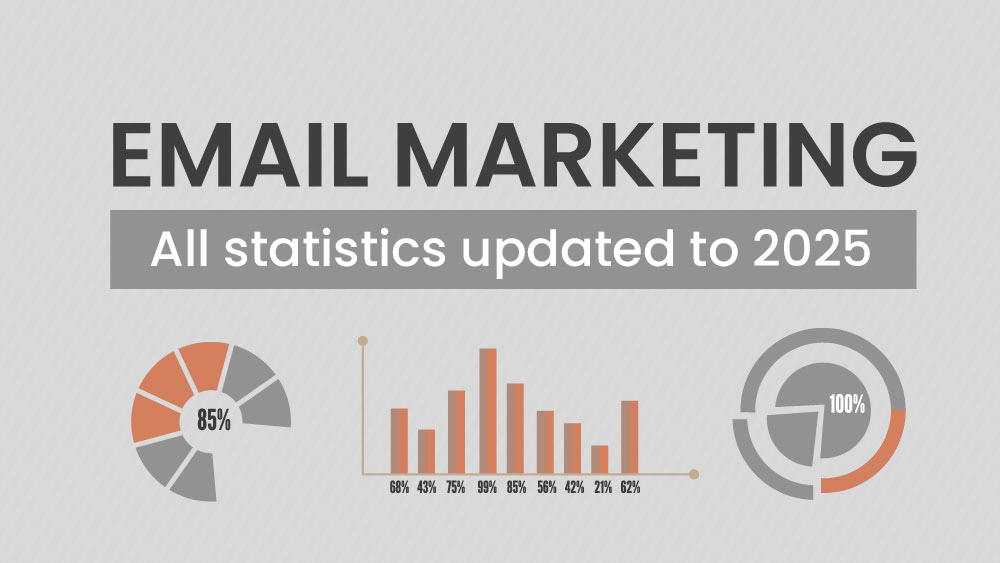A/B testing: the most common form of testing for newsletters and mass emails. It involves selecting a section of your database contact list, dividing it into group A and B and sending two different email versions to each one. This makes it possible to accurately evaluate the effectiveness of each message. It’s also known as split testing.
Autoresponder: an event-triggered email. For instance, a dedicated message when one of your subscriber has birthday or a welcome email after a new subscription.
Best practice: broadly speaking, the practice or technique designed to produce the best results in a specific area. Email marketing best practices are oriented towards user transparency, paying special attention to the form and content of emails and the succinctness of the subject etc.
Blacklist: a list of email addresses or IPs that are considered spam senders, and thus are blocked by the incoming server.
Bounce: the action of quickly leaving a web page (or an email) without performing any activity. The bounce rate is the percentage of detected bounces.
Bounced emails: emails that get returned to the sender because they can’t be delivered. A distinction is generally made between a soft bounces (temporary inability to deliver i.e. due to issues like recipients exceeding their space limit or an out-of-office responder) and hard bounces (emails that are not delivered and will not be, i.e. due to a non-existent address).
Call to action: the invitation in an email or a web page to perform a particular action, which in turn is supposed to lead to a conversion. Call to actions are usually supported by some type of eye-catching graphics, so to encourage users to take action i.e. a clickable button or banner with contrasting colors.
Click Map: a tool that displays a preview of your Εmail Campaign, along with graphic elements indicating the location of each link and the total number of clicks corresponding to it.
Click-through: the click on a link that is contained within the sent email. The click-through rate is the percentage of click-throughs out of the total number of received emails.
Client: a software which enables users to read and write their emails, such as Microsoft Outlook.
Conversion: a technical term that describes the completion of a process by recipients according to the sender’s specific objectives. There are different types of conversions, such as the purchase of a product, signing up to a newsletter, or even a visit to the website that lasts more than a certain amount of time.
DEM: the acronym for Direct Email Marketing, it represents the mailing-out of emails for advertising or commercial purposes, as well as these emails themselves.
Deliverability: the sender’s ability to successfully deliver sent emails, without getting blocked by ISP filters or ending up as spam.
Dropped emails: emails unsent because they are on your blacklist.
Funnel: indicates the necessary path and the steps that lead a simple visit to a conversion.
KPI: the acronym for Key Performance Indicators that represent the parameters used to evaluate the performance of an email campaign or (more in general) a business process.
IP: it stands for Internet Protocol, a fixed number that identifies a device connected to the internet.
Impression: the single display of any type of web page, as well as HTML emails.
Privacy policy: a text that explains how all data supplied by customers (when registering to a site or a newsletter) will be treated.
Landing page: the page on your website where the clicks on a DEM are redirected — and where the user should finally convert.
Lead: a potential customer to be “activated” via a targeted marketing approach.
Open rate: the percentage of emails opened out of the total number of emails delivered. Although it is a very important indicator, it’s wise not overestimate its importance: in itself, the mere opening of an email doesn’t automatically trigger an action or conversion.
Opt-in: all actions that users perform in order to subscribe to a newsletter, providing their email address and thus giving the sender their consent to use it for a specific scope. Double opt-in requires users to give their consent twice — usually by a transactional email with a link to click — in order to complete the subscription process.
Phishing: a particular form of email spam, with the aim to steal receivers’ private information stored on their computer, such as credit card numbers, passwords, identification codes, etc.
ReCAPTCHA: a system designed to establish that a computer user is human.
Registration form: a web page that enables users to subscribe to a newsletter. It can be opt-in or double opt-in.
Rendering: the way email messages are displayed. Specifically, this term also includes senders’ techniques aiming at best matching users’ visual display to the original format.
ROI: it stands for Return On Investment, and is the relationship between turnover and investment. In short, the simplest way to measure the economic profitability of an operation.
SMTP: an acronym for Simple Mail Transfer Protocol. It’s the protocol that acts like a postman, conveying technically all email messages from the sender to the incoming servers.
Spam: is in its broadest sense, any type of non requested mass email. Spam messages are also known as junk email or unsolicited bulk email (UBE).
Subject line: the field where the subject of the email is written.
Temporarily delayed emails: the sent emails that are waiting to be delivered to recipients. After a certain number of attempts, if the emails are not delivered, they will be considered as bounced emails.
Transactional emails: service emails that are designed to confirm various types of functional actions or send data with a non-commercial scope or simply for information purposes. They are generally triggered by a particular event, such as a subscription.
Unsubscribe: the process of canceling one’s subscription from a newsletter — also known as opting-out. The subscribers email address is removed from the sender’s database.
White list: a database containing email addresses whose owners have consented to receive marketing messages.








